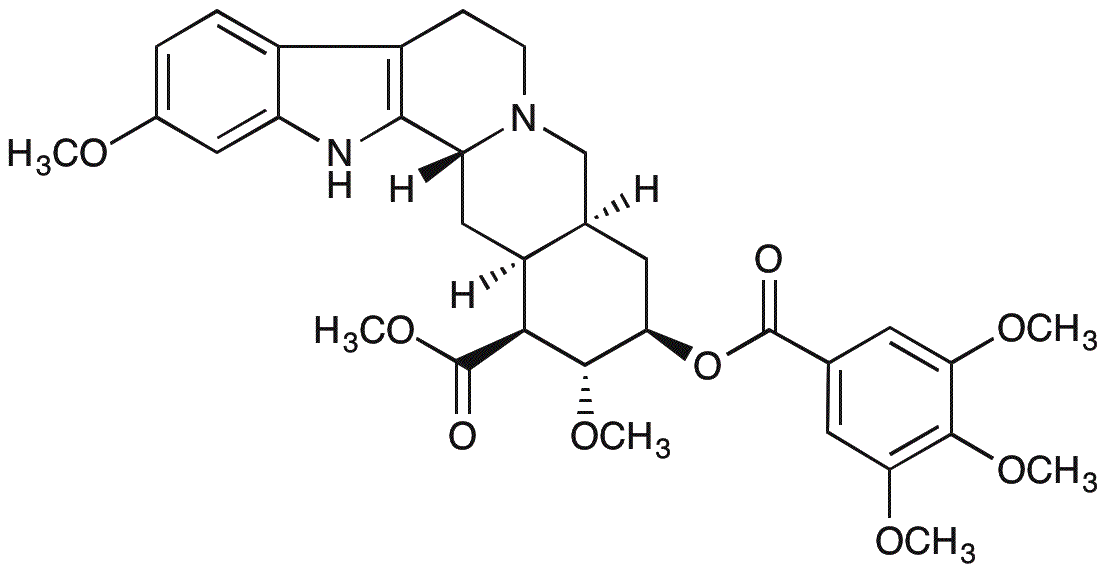Reserpine is widely utilized in research focused on
- Pharmaceutical Development: Reserpine is primarily used in the formulation of antihypertensive medications, helping to lower blood pressure in patients with hypertension.
- Neuroscience Research: It serves as a valuable tool in studies related to neurotransmitter regulation, particularly in understanding the role of serotonin and norepinephrine in mood disorders.
- Animal Behavior Studies: Researchers use reserpine to investigate its effects on animal behavior, particularly in studies related to stress and anxiety, providing insights into potential treatments for similar conditions in humans.
- Traditional Medicine: In some cultures, reserpine is utilized in herbal medicine for its calming effects, showcasing its historical significance and ongoing relevance in alternative therapies.
- Cardiovascular Research: Its application in cardiovascular studies helps in understanding the mechanisms of drug action on heart function, contributing to the development of new therapies for heart diseases.
Información general
Propiedades
Seguridad y normativas
Aplicaciones
Reserpine is widely utilized in research focused on
- Pharmaceutical Development: Reserpine is primarily used in the formulation of antihypertensive medications, helping to lower blood pressure in patients with hypertension.
- Neuroscience Research: It serves as a valuable tool in studies related to neurotransmitter regulation, particularly in understanding the role of serotonin and norepinephrine in mood disorders.
- Animal Behavior Studies: Researchers use reserpine to investigate its effects on animal behavior, particularly in studies related to stress and anxiety, providing insights into potential treatments for similar conditions in humans.
- Traditional Medicine: In some cultures, reserpine is utilized in herbal medicine for its calming effects, showcasing its historical significance and ongoing relevance in alternative therapies.
- Cardiovascular Research: Its application in cardiovascular studies helps in understanding the mechanisms of drug action on heart function, contributing to the development of new therapies for heart diseases.
Documentos
Hojas de datos de seguridad (HDS)
La SDS proporciona información de seguridad completa sobre la manipulación, el almacenamiento y la eliminación del producto.
Especificación del producto (PS)
La PS proporciona un desglose completo de las propiedades del producto, incluida la composición química, el estado físico, la pureza y los requisitos de almacenamiento. También detalla los rangos de calidad aceptables y las aplicaciones previstas del producto.
Certificados de análisis (COA)
Busque certificados de análisis (COA) ingresando el número de lote del producto. Los números de lote y de partida se pueden encontrar en la etiqueta de un producto después de las palabras "Lote" o "Lote".
Número de catálogo
Número de lote/lote
Certificados de origen (COO)
Este certificado de origen confirma el país en el que se fabricó el producto y también detalla los materiales y componentes utilizados en él y si se deriva de fuentes naturales, sintéticas u otras fuentes específicas. Este certificado puede ser necesario para cumplir con las normativas aduaneras, comerciales y regulatorias.
Número de catálogo
Número de lote/lote
Hojas de datos de seguridad (HDS)
La SDS proporciona información de seguridad completa sobre la manipulación, el almacenamiento y la eliminación del producto.
DownloadEspecificación del producto (PS)
La PS proporciona un desglose completo de las propiedades del producto, incluida la composición química, el estado físico, la pureza y los requisitos de almacenamiento. También detalla los rangos de calidad aceptables y las aplicaciones previstas del producto.
DownloadCertificados de análisis (COA)
Busque certificados de análisis (COA) ingresando el número de lote del producto. Los números de lote y de partida se pueden encontrar en la etiqueta de un producto después de las palabras "Lote" o "Lote".
Número de catálogo
Número de lote/lote
Certificados de origen (COO)
Este certificado de origen confirma el país en el que se fabricó el producto y también detalla los materiales y componentes utilizados en él y si se deriva de fuentes naturales, sintéticas u otras fuentes específicas. Este certificado puede ser necesario para cumplir con las normativas aduaneras, comerciales y regulatorias.


